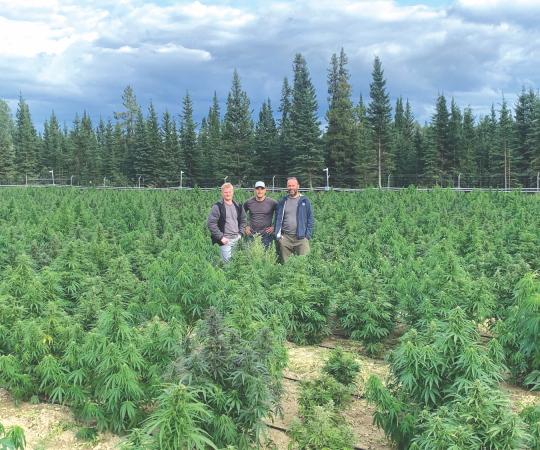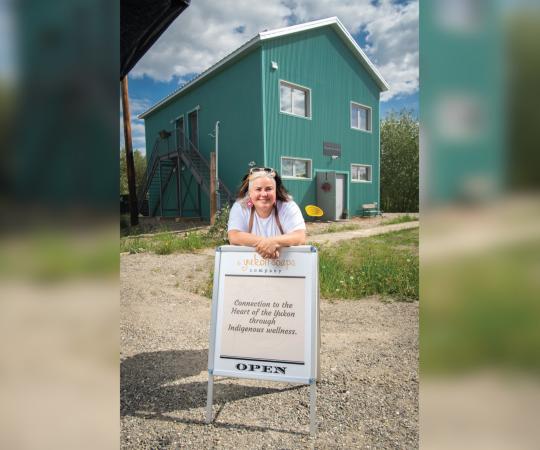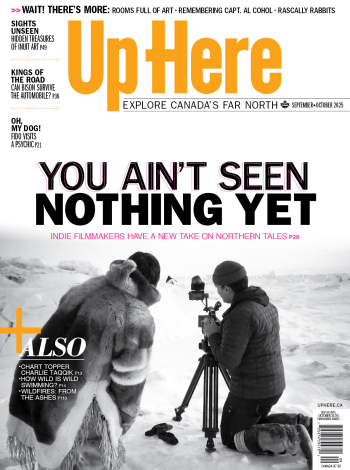The first thing to know about buying a new car in Nunavut is you can’t buy a new car in Nunavut. Not technically anyway. Depending on where in the eastern Arctic you live, you’ve got to look south for dealers.
But picking out a vehicle is the easy part, because the second thing you need to know—if this even bears stating—is there are no roads to Nunavut, so it’s not like you can just drive your shiny new toy home. This means deciding on the make and model of your vehicle is just as important as reserving space on a sealift, barge, jet or a highly-specialized overland transport service to move it north.
BY AIR: Air cargo is far and away the most expensive method of moving a vehicle to Nunavut. Even government and businesses opt to fly in new vehicles from the south to Iqaluit, Cambridge Bay and Rankin Inlet, only on rare and emergency-type situations. Unless you have a spare $9,000 to $15,000 lying around, it’s a means of conveyance you may not want to give much consideration.
BY SEA: Right now, the sealift is the most sensible and affordable means of bringing cars to Nunavut and coordinating it is easy enough. Two companies—Nunavut Sealink and Supply Inc. and Nunavut Eastern Arctic Shipping—operate more or less on par for price point at around $2,500 to $3,000 to ship a small vehicle to Iqaluit. They dock and load along the St. Lawrence River at Sainte-Catherine and Valleyfield in Quebec, respectively, so a range of Montreal to Toronto gives you dealer selection and a relatively painless drive to port. If you can’t deliver the vehicle yourself, you can hire ground transportation on a flatbed truck or through a private driving service that your dealer might recommend. In the Kitikmeot—Cambridge Bay, Kugluktuk, Gjoa Haven and Taloyoak—NTCL works much the same way, only with barges that travel down the Mackenzie River from Hay River. You can drive your vehicle to the terminal or purchase one from a dealership in Hay River or Yellowknife and have them make arrangements.
BY LAND: Sure there are no roads to the territory, but if you live in Rankin Inlet, Arviat, Whale Cove, Baker Lake or Chesterfield Inlet, transporting a vehicle by ground is an option: there are guys in the Kivalliq who will “bomb” your new vehicle in from Churchill.
Brian Sigurdson—“Sig”—owns five 1970s wide-body Bombardier B 12s. His bombing business will load your
vehicle—or anything really—on an oversized qamutiq and tow it over the sea ice. For this option, Churchill is your drop-off point by road or rail. The most economical way is to buy a car in Winnipeg, drive to Thompson and train it to Churchill.
One-way from Churchill to Rankin Inlet is about 48 hours, “depending on the weather, terrain, and breakdowns—there’s usually a couple along the way,” says Sig. Like the sealift, the window for bombing is only four or five months, but in the winter instead of summer. Bombing a vehicle from Churchill to Arviat will run you about $3,000, but prices vary depending on the job.

WHAT TO REMEMBER WHEN BUYING A CAR IN NUNAVUT
How to ship up your ride and make it last:
- It pays to get a vehicle that is serviceable in your community. The sheer level of computerization today makes some models difficult to troubleshoot for issues and repair if diagnostic scanning tools aren’t available locally. Imports are generally harder to work on, and something as silly as losing the keys to your Mitsubishi may mean flying a mechanic into your community or requiring you to ship out the vehicle.
- Double—no, triple—check how considerate a company is of warranties. That is, are they willing to pay for shipping in and out of Nunavut if need be?
- White vehicles are hard to see in blizzards.
- You can leave car-buying to a pro. Iqaluit resident Neil Christopher bought a 2012 Ford F150 last summer. (Actually, someone did it for him.) Christopher used a Toronto broker, who acts as a car consultant, to do the deal.
“I think it’s a great way to buy a car. I feel like a lot of Nunavummiut don’t know how to buy cars in the south,” he says. Christopher compared the cost of used and new Jeeps in and out of the territory and found used Jeeps in Nunavut $5,000 to $6,000 more expensive than new ones outside the territory. With local valuation out of whack, he decided to hire someone who knew best, someone who literally buys cars for a living.
This—key word—professional car buyer finds the best possible deal. They take your specs and visit dealers on your behalf. They test drive for you and even give a live road report. They research the Redbook value, factory rebates, history of the vehicle and negotiate prices down. If you go this route, know what you want—make, model, year, 4x4 versus all-wheel, power versus standard features, etcetera.
Depending on how much running around your request requires, it’ll cost about $350 and up for this consultant. But not having to physically be there is a major time and money saver. Flying south is a pain for what is essentially an errand. (“People think it’s such a hassle to bring a new car up,” says Christopher.) Having someone else’s foot do the test-driving saved him work hours and, more importantly, vacation days. And it only cost him a fraction of an airfare.
KNOW YOUR PRO
Angus McComb is a professional car buyer. If his name sounds fabricated to you too, see Ontario’s vehicle sales regulator—OMVIC—consumer search tool to verify who is and is not a registered broker. (McComb is; I checked.) “I’ve gone out of my way to protect my consumer,” he says, adding that there are indeed illegitimate brokers. For example, the law stipulates a broker cannot claim fees from the buyer and dealership—double-dipping McCombs calls “highly unethical and highly illegal.” While other provinces have similar arm’s-length regulators in the car sales biz, it’s easy for unscrupulous brokers to fly under the radar since they are low on the priority list. It’s best to be careful choosing your buyer.

FULL OF SCRAP
The sealift biz has adopted the method of crating vehicles—if they fit—in reused seacans with cutouts on the side for the doors. It saves space so the two companies can ship more and more cars each year. But the influx of vehicles presents a predictable problem: they are on a one-way trip to isolated communities, and shipping them back when they’re derelict is too costly to make it viable. The vehicles are left to rust and leach out in the open or in poorly managed landfills. Contaminants pose a risk to wildlife and the land. Mercury switches and airbag triggers lying around aren’t ideal for humans either. Fixing this problem is a big job that calls for skilled professionals. Enter Summerhill Impact, a not-for-profit based in Toronto that trained crews last summer in Arviat and Gjoa Haven to properly decontaminate and crush vehicles. Now those crews can train hamlet workers to do the same jobs later on down the road. To date, their end of life vehicle-recycling program has stripped and shipped about 80 vehicles. They plan to continue the work this summer.










